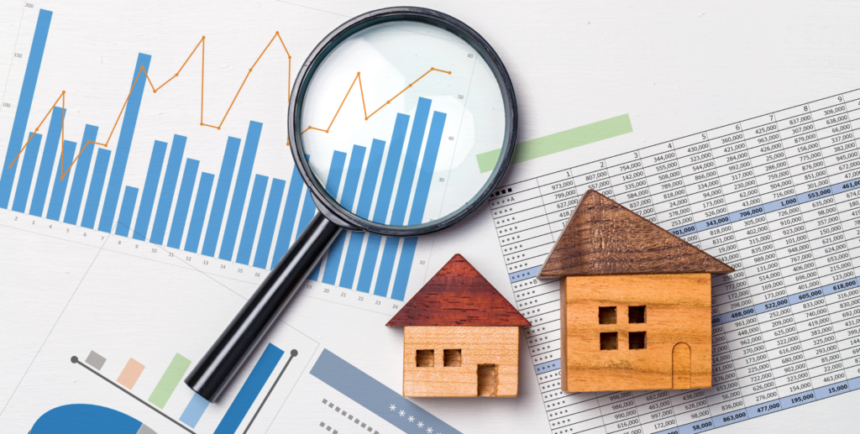Understanding how to do a comparative market analysis (CMA) as a real estate investor is vitally important. Being able to accurately determine a property’s market value could help you make better investing decisions. Whether you’re looking to add a new property to your portfolio or sell a property to maximize your return on investment, a CMA can help you find the best deals.
A CMA is much more than a boring collection of data to sort through. It’s your secret weapon for evaluating a property’s investment potential. Therefore, doing a CMA before making a buy or sell decision is time well spent.
What Is a Comparative Market Analysis?
A CMA is a valuable pricing tool that you can use to help you make informed investing decisions. It’s a way to estimate the current market value of a property based on the prices of similar homes in a community that have recently sold. These homes are referred to as comparables, or comps.
CMA reports are usually prepared by real estate agents and brokers, but you can do a CMA yourself by researching online real estate listings. A comparative market analysis considers factors like price per square foot, neighborhood, date built, and other home features.
A comparative market analysis determines a property’s value, much like an appraiser would. With a CMA, however, the amount that is determined is an estimate that is derived from relevant data from similar homes.
When conducting a CMA, remember that each property in a community will typically be different from the others, and it won’t be possible to find an exact match for a property. A possible exception is with tract housing—which may have multiple properties with the same features.
You will have to find properties close to the one you are evaluating when doing a CMA. Investors must understand how to account for the differences to determine the right listing or offer prices.
The Difference Between a CMA and an Appraisal
An appraisal is a pricing tool that is used to determine the market value of a home, but it’s different from a CMA in one important way. An appraisal is performed by a licensed real estate appraiser, while a CMA is an estimation that is typically done by a real estate agent or investor.
The difference is in the accuracy of the value that is determined. Home sellers, buyers, and investors typically use market values derived from CMAs, while banks and other mortgage lenders need more accurate information to help them make lending decisions.
An appraisal is typically performed by a bank during the underwriting process, and the valuation is used to determine how much it will loan for a property. If an appraisal comes in low, it may affect a buyer’s ability to get a loan.
CMAs are ideal for determining a home’s value for real estate investing purposes. It’s important to point out, however, that a list price is usually a starting point in the negotiation process. A home may sell for less than its list price in a buyer’s market or for more in a seller’s market.
The Importance of a CMA
Being able to perform an accurate CMA is a critical skill that all real estate investors should learn how to do. Understanding property valuation may help you determine whether a particular investment is a good deal.
Here are some important advantages of CMAs to consider for real estate investors:
Pricing accuracy
A property may look like a good deal at first glance, but you won’t know for sure until you find out what similar properties in the community have recently sold for. Factors you aren’t aware of may be driving prices down, like a local economic downturn, zoning changes, a contaminated water source, or something else.
Informed investment decisions
An accurate CMA may help you determine if a particular real estate investing strategy—like fix and flip or BRRRR—is a good option for a property. For a project to make financial sense, you need to know how much it will sell for after you have finished rehabbing it. This will help you determine if you will earn a profit after factoring in the purchase price, plus the additional investment for materials and labor for the rehab.
Decreases risk
Conducting a CMA may help to prevent you from over- or undervaluing a property. This could protect you from paying too much and ending up with a bad investment.
Negotiation leverage
When purchasing a property, a CMA could give you valuable information you can use in the negotiation process. If local comps are more affordable than a property’s list price, you can use the information to support a lower bid, which may improve your chances of closing the deal with a better price.
Market trend analysis
Real estate investors typically don’t want to purchase homes in communities where prices are declining. Buy low and sell high is the common strategy most investors follow. A CMA may help you determine whether prices are rising or falling in a particular community, which may help you decide whether to buy a property or pass on it in favor of a home somewhere else.
Tax assessment accuracy
If you receive a tax assessment on a property you own that you believe is too high, you may be able to challenge it with the information from a CMA. The comparative market analysis may show that the comps in the community are less than what your property is valued at for tax purposes.
Components of a CMA
You will need to gather information on your target property and similar local properties before you can conduct an analysis. There are four components to a CMA, and it’s important to make sure you have all the necessary data before you begin the property valuation to make sure the price you come up with is correct.
Property information
You need accurate property information to perform a CMA, and the more information, the better.
A few things to consider when evaluating a property include:
- Lot size
- Address
- Property type
- Square footage
- Unique features or amenities
- Number of bedrooms and bathrooms
When recording property information, be sure to also include a detailed description. This may prove helpful when comparing it to comps. Taking pictures of the property may also help you identify unique features that other properties don’t have.
Comps
Comparable properties (comps) are properties that are close in size, features, and number of rooms to a home you are doing a CMA on. It usually isn’t possible to find a comp that is an exact match for a property, however. If you have a 2,400-square-foot home with four bedrooms and three bathrooms, for example, you may have to settle for similar homes in a community that only have three bedrooms or two bathrooms.
Comps are homes that have recently sold. Because a property is only worth what someone is willing to pay for it, it’s the sale prices of the comps that help you determine an accurate market value, not the list prices.
When searching for comps, the more you find, the better. More comps will help you derive a more accurate property value. At a minimum, you should try to find at least three.
Market trends and analysis
Finding out whether the local real estate market is appreciating or depreciating is an important factor in any investment decision. If property values are decreasing in a community, it may make an otherwise good property a bad investment.
Factors that may help you determine market trends include:
- Inventory levels
- Days on market
- Historical sales data
- Local employment data
- Number of new home constructions
- Changes in a community’s population
Individual factors may not always give you a complete picture, which is why it’s important to evaluate as much data as possible. Historical sales data may show home prices increasing, for example, but a sudden decrease in a community’s population may be due to the closure of a large employer, which could drive home prices down.
Price adjustments
When conducting a CMA, the prices of the comps in a community will help you zero in on a market value for a property. Adjustments to the comps should be made if there are any differences from the property you are valuing.
If a comp is 2,000 square feet and the property you are valuing is 1,800 square feet, for example, an adjustment may be needed to account for the difference. A valuation can then be determined.
How to Perform a CMA
The steps to perform a CMA are not difficult. As long as you have accurate information about a property, its comps, and market trends, a valuation can be determined without having to perform any complex calculations.
Step 1: Gather property information
The first step in conducting a CMA is to carefully consider everything you know about the subject property. You’ll need to know the location, square footage, number of bedrooms and bathrooms, and the year the home was built. You’ll also want to know about any renovations and notable features, as well as extra amenities like a swimming pool, view, or attached garage.
Step 2: Select the comps
The next step is to use the MLS, public information from the city assessor, or other sources like Zillow to pull information on comparable properties that have recently sold. You will need at least three properties that have sold within the previous year to do an analysis.
This may be easy to do in a large metro market with many comps, but it may be more difficult in a smaller community. If necessary, you may have to extend your search to properties that sold a little further back.
Keep in mind that you’re not looking for active listings. With properties that haven’t yet sold, you will only know the list prices, not the final sale prices after the negotiations have been completed.
Step 3: Do a property comparison
Next, evaluate the features and prices of local comps. Be sure to consider features other than the size and number of rooms—such as the attractiveness of the community, busyness of the neighborhood, curb appeal, and access to a good school district.
Also, don’t forget to consider the condition of the comps. You can’t compare a recently updated property to a home that hasn’t been updated in decades, for example—even if they have the same number of bedrooms and were built the same year. The two properties likely won’t have the same market value, so it’s important to make adjustments for renovations and condition.
Step 4: Make adjustments
After you have a list of comps, you will need to make adjustments to the property values to account for any differences. You may have to add or subtract from the sales prices to account for more or fewer bathrooms, bedrooms, square footage, and other features.
Step 5: Do a market trends analysis
You should see a pricing trend when analyzing properties in a community, which will help you determine your subject home’s value. Most of the comps should fall into a narrow price range.
Step 6: Calculate the estimated value
You can now determine the estimated value of the subject property by combining the adjustments you made with the market analysis data. The formula for determining the CMA is relatively simple once you have all the necessary information. The price you come up with can be a single price or a price range.
CMA Example
A great way to understand how the CMA is determined is with a practical example.
Consider the following scenario: A real estate investor would like to make an offer on a three-bedroom, two-bathroom home that is 2,000 square feet. The subject home is listed at $250,000. To conduct a CMA, the investor finds three comps and then calculates each home’s price per square foot.
- Comp No. 1: 2,500 square feet, $300,000 sale price
- Comp No. 2: 1,800 square feet, $225,000 sale price
- Comp No. 3: 2,000 square feet, $210,000 sale price
The investor can now calculate the average price per square foot for the comps. The formula for the calculation is:
(Comp No. 1 price/square footage) + (Comp No. 2 price/square footage) + (Comp No. 3 price/square footage) / (total number of comps)
Applying the formula to the example, we get:
($300,000/2,500) + ($225,000/1,800) + ($210,000/2,000) / 3 = $116.67
The average price per square foot for the comps is $116.67, which means the market value for the subject property is approximately $233,340 (2,000 square feet * $116.67).
Final Thoughts
If you are a real estate investor, learning how to conduct a CMA may help you avoid bad investments. Before you try your hand at valuing a property you are thinking about buying, you can practice by selecting a home, finding comps for it, and then doing a comparative market analysis to determine its market value.
Whether you are buying or selling, the CMA is a powerful tool you can use to help you make informed investing decisions. It can also be applied to many different investing strategies—like buying foreclosures, multifamily homes, single-family homes, and others. Because of its versatility, it can also be used for many different property types.
Ready to succeed in real estate investing? Create a free BiggerPockets account to learn about investment strategies; ask questions and get answers from our community of +2 million members; connect with investor-friendly agents; and so much more.
Note By BiggerPockets: These are opinions written by the author and do not necessarily represent the opinions of BiggerPockets.









